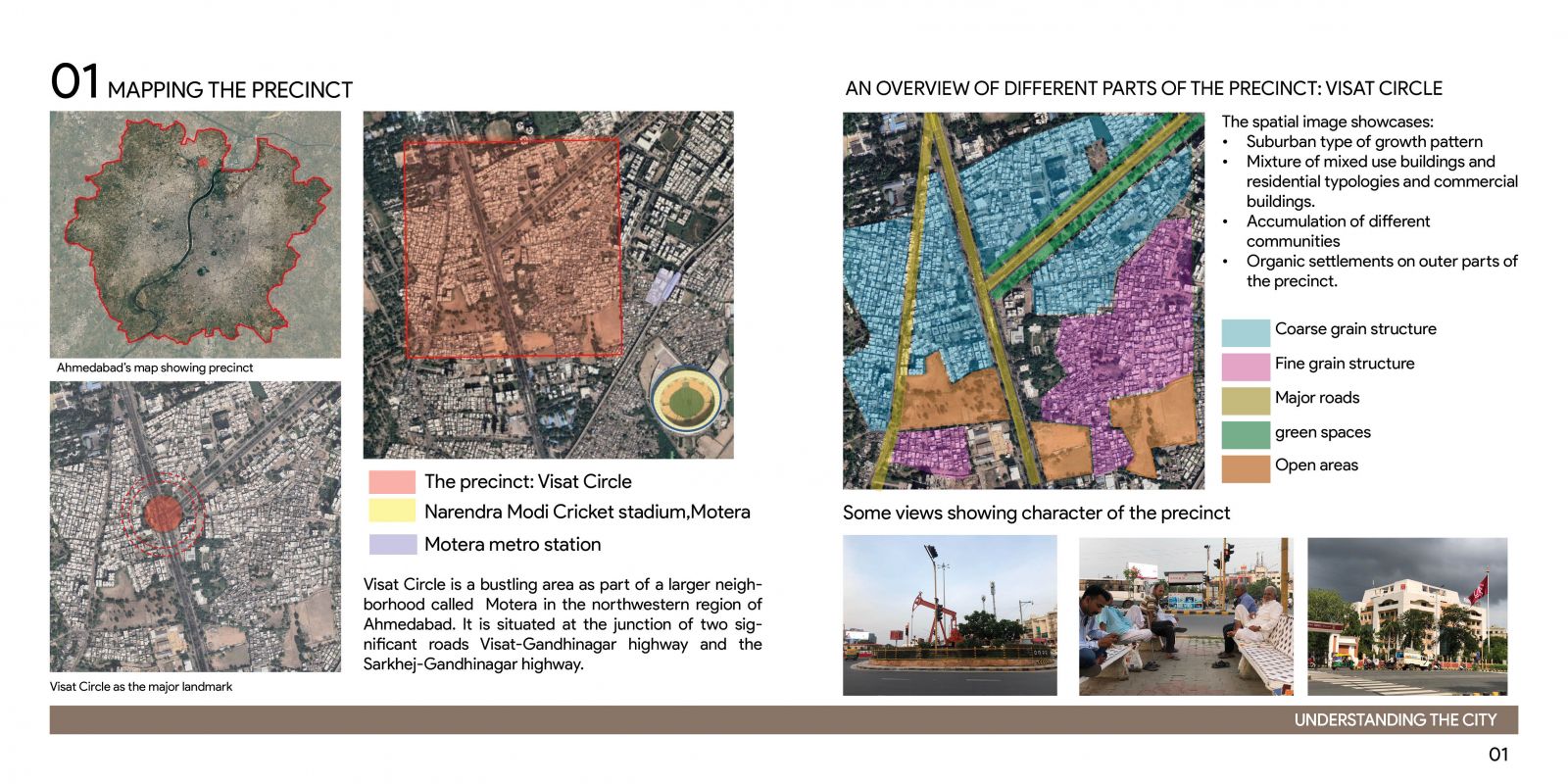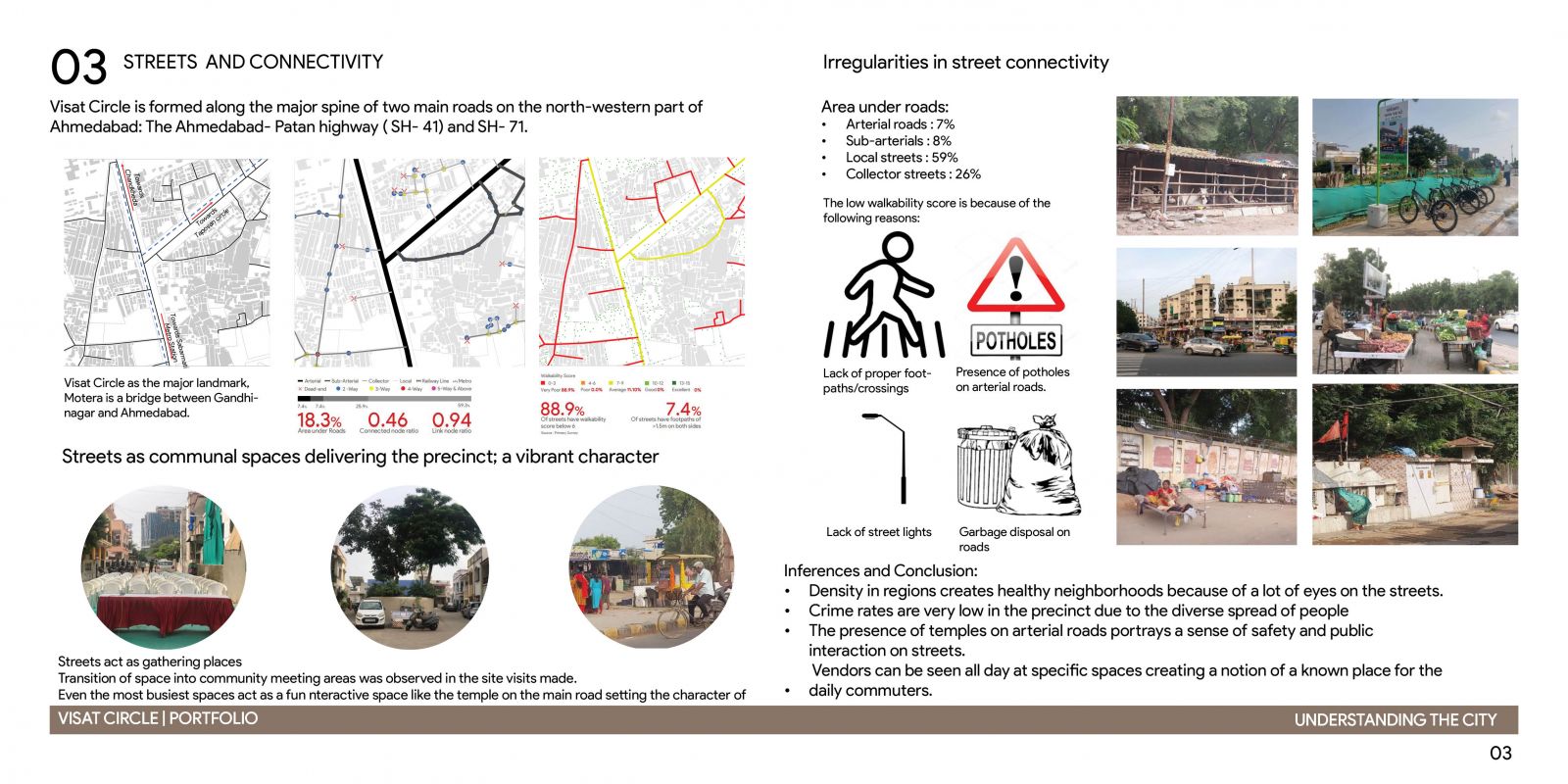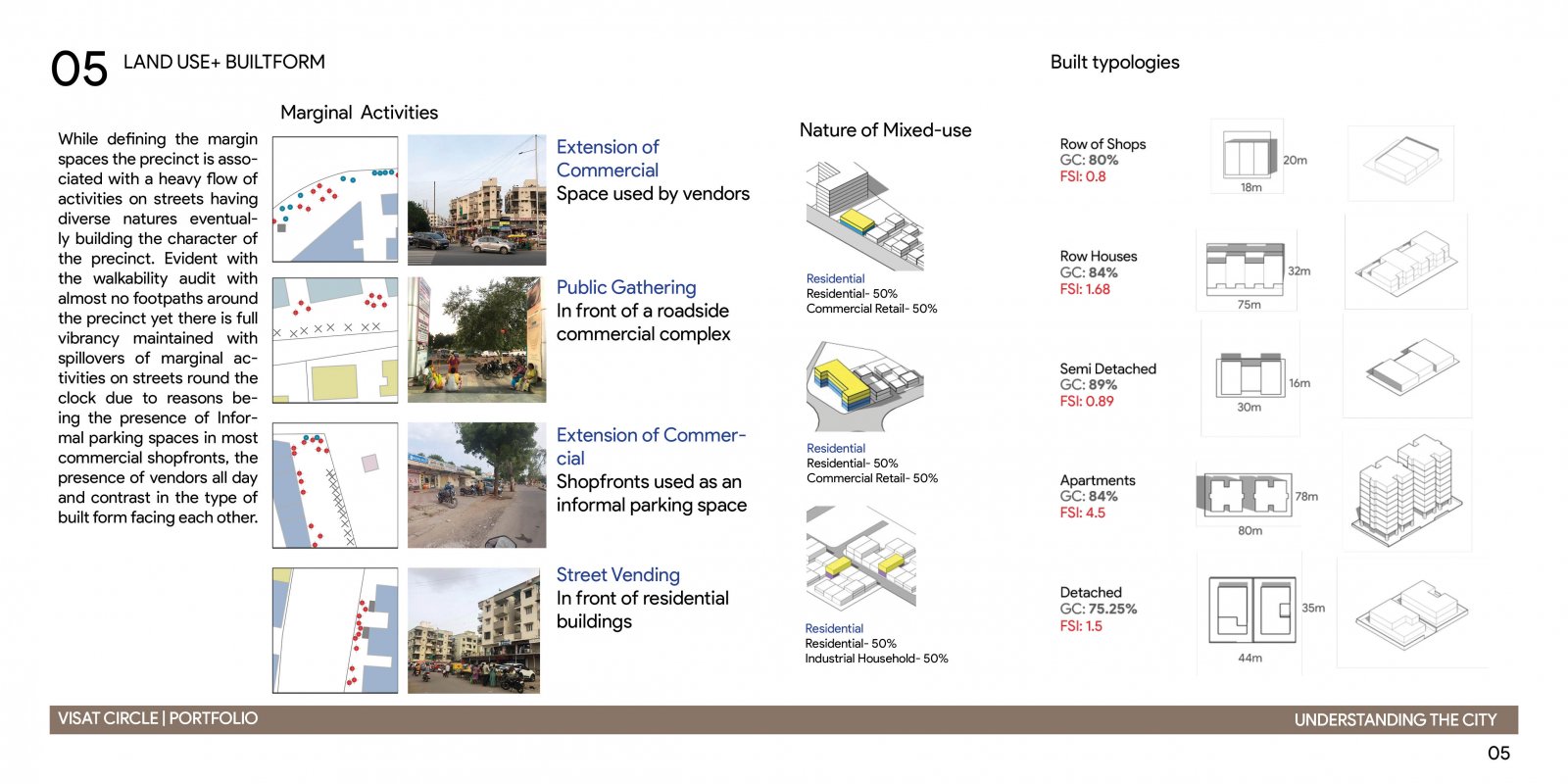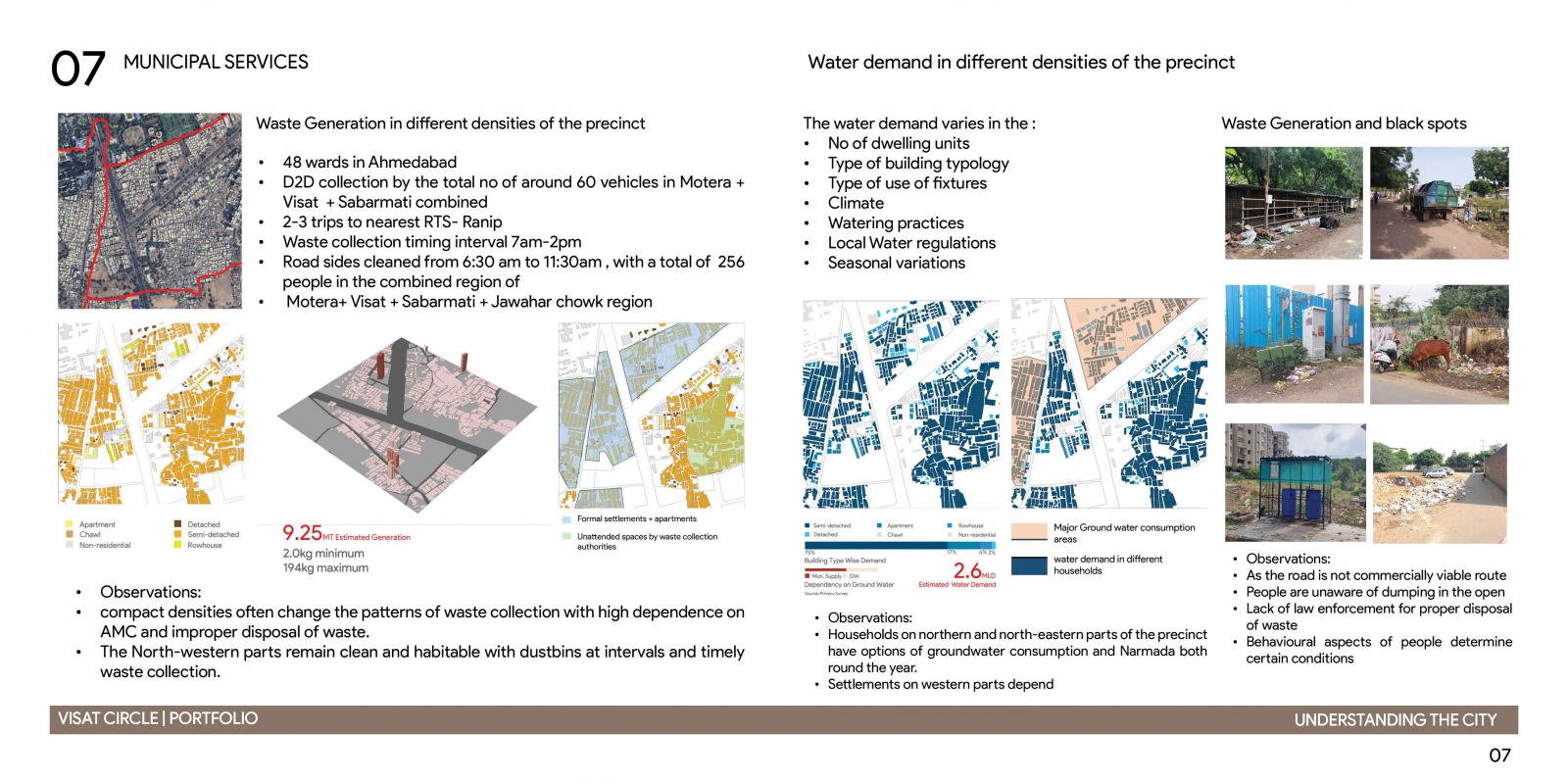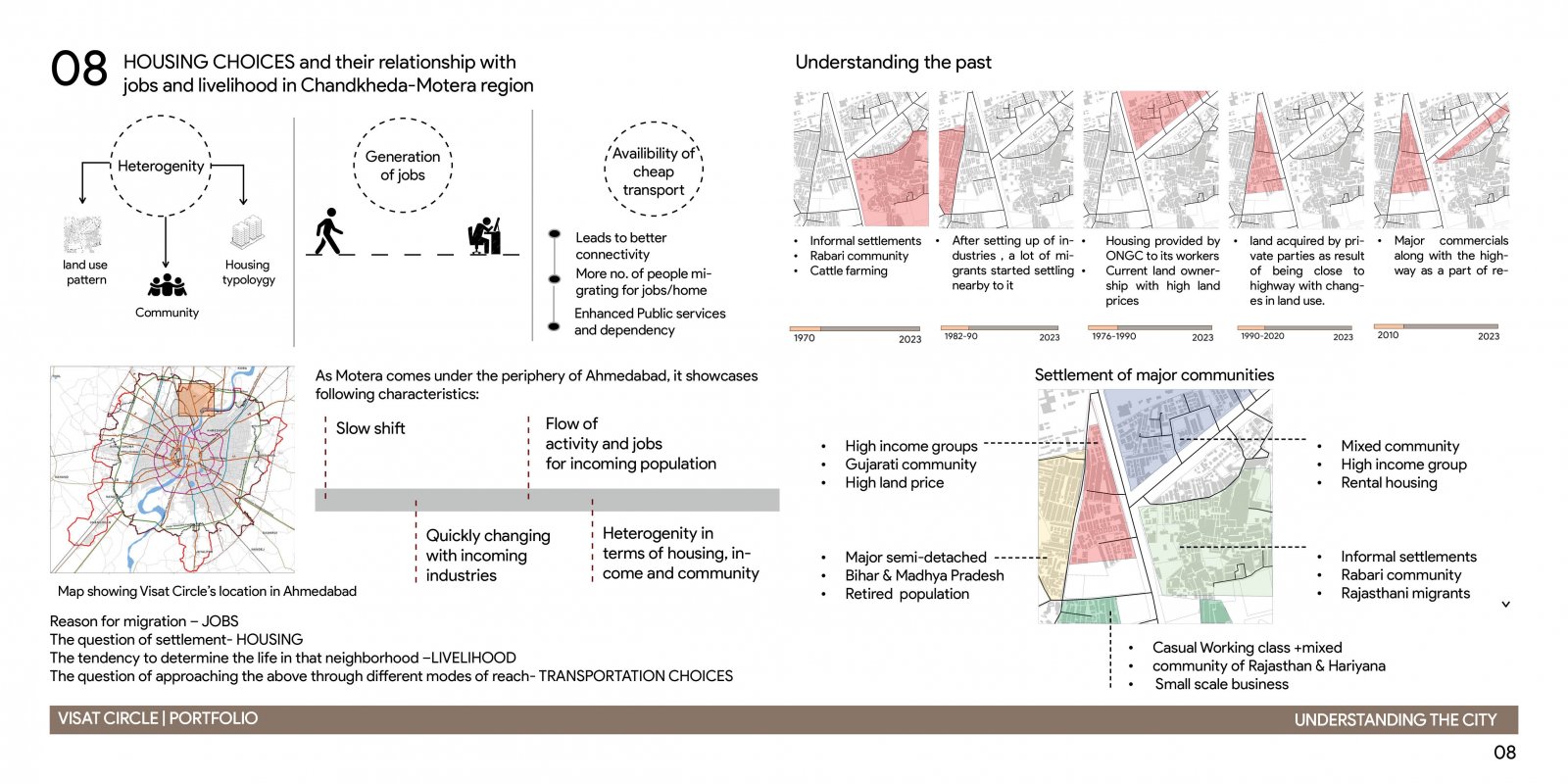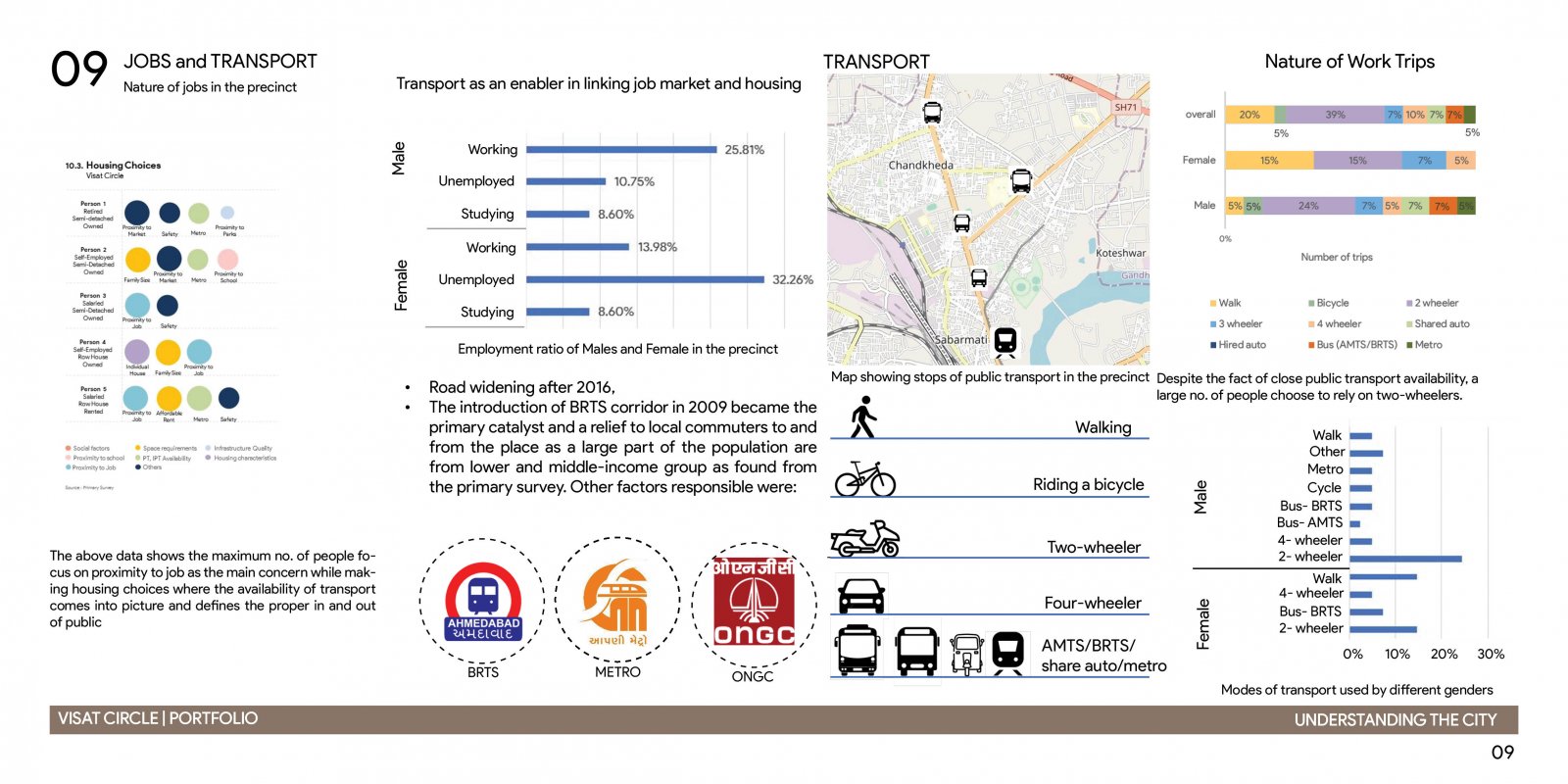Your browser is out-of-date!
For a richer surfing experience on our website, please update your browser. Update my browser now!
For a richer surfing experience on our website, please update your browser. Update my browser now!
Visat Circle, located in the Motera neighborhood of Ahmedabad, has transformed from farmlands and informal settlements to a lively neighborhood with diverse transportation modes. It's transformation is evident from east to west, demonstrating different income groups and access to various amenities. The intersection of major roads, a BRTS corridor, and the Sabarmati metro station improve connectivity, attracting jobs and prestigious universities. This vibrant neighborhood in Ahmedabad's Motera-Chandkheda district captures the fusion of urban and rural elements, influencing the changing face of Visat Circle. The information gathered from relevant interviews done with people living in the region over the past 30 years suggests that with the increase in the width of roads, the inclusion of Motera in AMC and Town Planning scheme in the recent past along with the establishment of various industries like ONGC, cement factories, schools and malls, Visat in Chandkheda-Motera region became a place of interest to the people for trade and commerce. The most significant reason for change remains the construction of Motera Stadium back in 1982, now called “Narendra Modi Stadium”. The incoming population from various parts of India, the ones from Rajasthan, Haryana, Bihar, Maharashtra, and other neighboring states shaped the demand for housing and trade in Visat Circle. Today, Visat Circle offers services and amenities on par with other parts of Ahmedabad. Its strategic location and prominence in the city promise future development and prosperity. Visat Circle in the Motera-Chandkheda area of Ahmedabad has seen gradual changes. There's a noticeable difference figured from its map from east to west, with various income groups living having varying access to amenities and services much like a gamtal compared with a suburb. Some parts are less clean, almost like villages, while others have well-maintained streets with essential services. Vendors are a common sight, making it feel safe, but the increasing traffic is a concern for the future.
